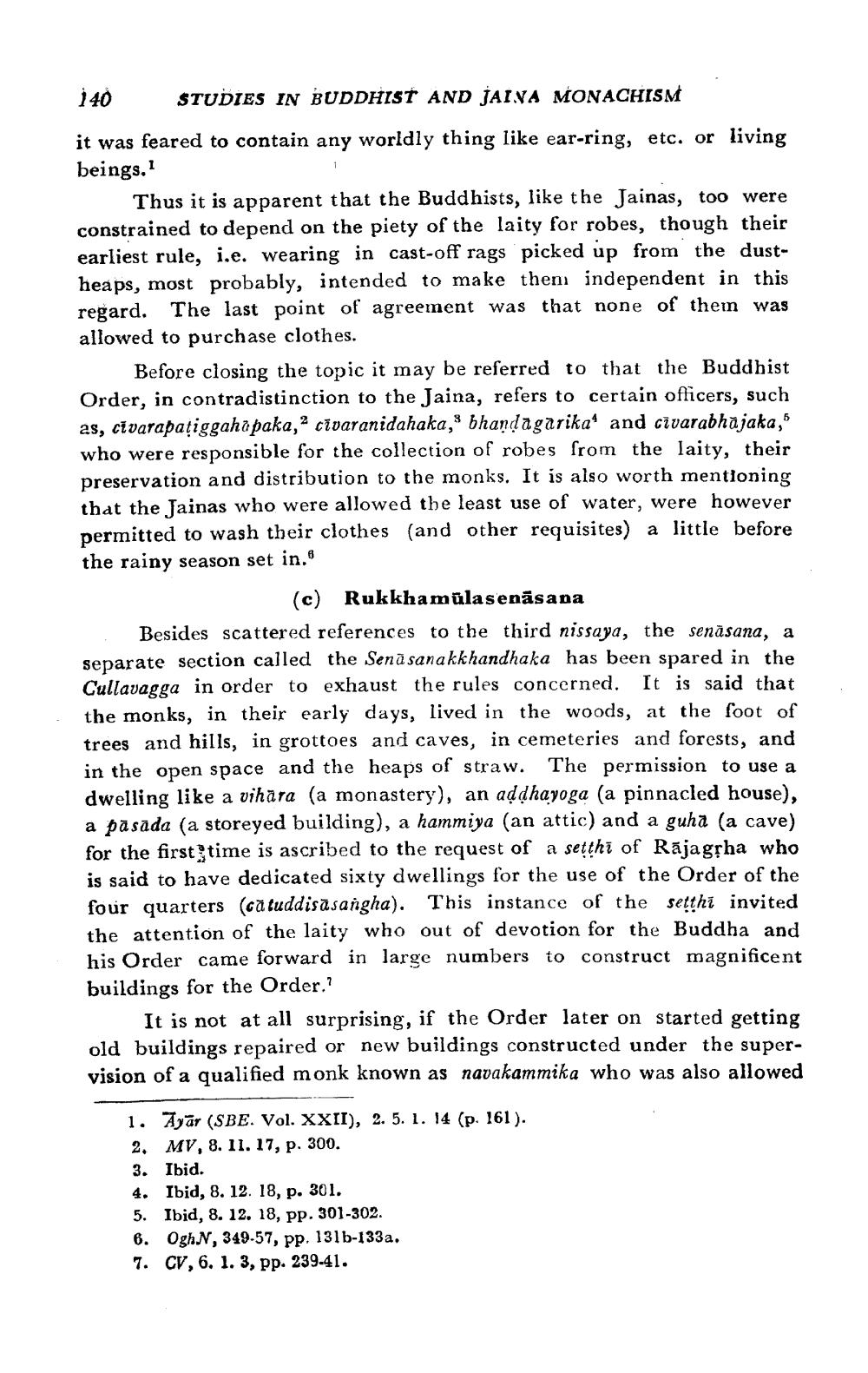________________
140
STUDIES IN BUDDHIST AND JAINA MONACHISM
it was feared to contain any worldly thing like ear-ring, etc. or living beings.1
Thus it is apparent that the Buddhists, like the Jainas, too were constrained to depend on the piety of the laity for robes, though their earliest rule, i.e. wearing in cast-off rags picked up from the dustheaps, most probably, intended to make them independent in this regard. The last point of agreement was that none of them was allowed to purchase clothes.
Before closing the topic it may be referred to that the Buddhist Order, in contradistinction to the Jaina, refers to certain officers, such as, civarapaṭiggahapaka, civaranidahaka, bhanḍagarika' and civarabhājaka," who were responsible for the collection of robes from the laity, their preservation and distribution to the monks. It is also worth mentioning that the Jainas who were allowed the least use of water, were however permitted to wash their clothes (and other requisites) a little before the rainy season set in."
(c) Rukkhamūlasenāsana
Besides scattered references to the third nissaya, the senāsana, a separate section called the Senä sanakkhandhaka has been spared in the Cullavagga in order to exhaust the rules concerned. It is said that the monks, in their early days, lived in the woods, at the foot of trees and hills, in grottoes and caves, in cemeteries and forests, and in the open space and the heaps of straw. The permission to use a dwelling like a vihara (a monastery), an addhayoga (a pinnacled house), a pasada (a storeyed building), a hammiya (an attic) and a guha (a cave) for the first time is ascribed to the request of a setthi of Rajagṛha who is said to have dedicated sixty dwellings for the use of the Order of the four quarters (catuddisasangha). This instance of the setthi invited the attention of the laity who out of devotion for the Buddha and his Order came forward in large numbers to construct magnificent buildings for the Order.'
It is not at all surprising, if the Order later on started getting old buildings repaired or new buildings constructed under the supervision of a qualified monk known as navakammika who was also allowed
1. Ayar (SBE. Vol. XXII), 2. 5. 1. 14 (p. 161).
2. MV, 8. 11. 17, p. 300. 3. Ibid.
4. Ibid, 8. 12. 18, p. 301.
5. Ibid, 8. 12. 18, pp. 301-302.
6. OghN, 349-57, pp. 131b-133a.
7. CV, 6. 1. 3, pp. 239-41.




